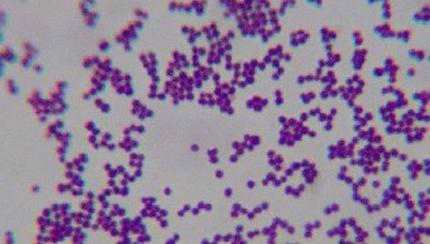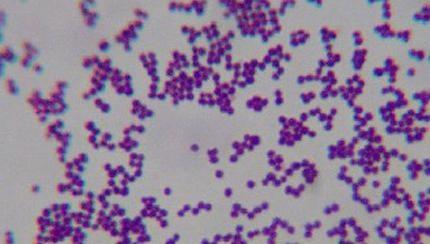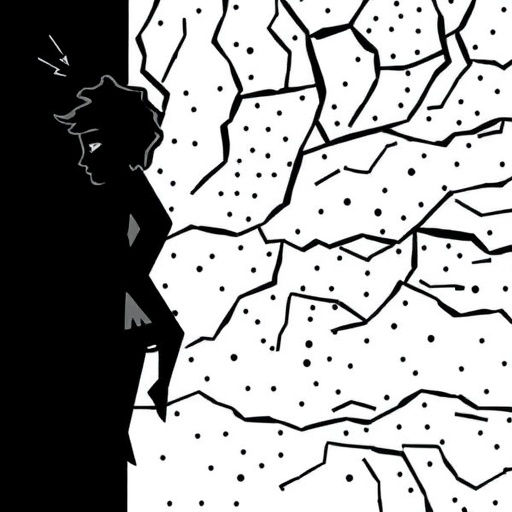
Credit: Lidia Stoyanova
Scientists from the Microbiology Department of the Faculty of Biology of the Lomonosov Moscow State University have discovered a new strain of lactic acid bacteria (LAB), which could be promising for further usage as a biopreservative in food preservation and as probiotics. The research results have been presented during the international conference "1-st Black Sea Assosiation of Food Science and Technology Congress" (December, 1-2).
Scientists from the Faculty of Biology at the Lomonosov Moscow State University with their colleagues have discovered in Transbaikal a new strain of lactic acid bacteria, which could be promising as probiotics.
According to the World Health Organization definition, probiotics are beneficial bacteria or other microorganisms, active against pathogenic microorganisms and providing normal functioning of the gastrointestinal tract microbiota, as well as other supporting organism functions. Probiotic microorganisms could be added as an ingredient to various food products, drugs and food additives. Certain strains of lactic acid bacteria and bifidobacteria are prevalently used as probiotics.
Lactic acid bacteria, isolated from natural fermented milk products, among other probiotic bacteria, have attracted special attention of microbiologists. The benefit of these bacteria for human health has been known in the years since Hippocrates (the 4th century B.C.). E. Metchnikoff also pointed out their revitalizing effect and characterized them as a tool for a struggle with premature senility. A peculiarity of lactococci is their ability to synthesize biologically-active peptides or protein complexes, known as bacteriocins. One of the most famous bacteriocins is nisin, an antibiotic, which is authorized for use as a food preservative under E234 code. One of the most important properties of nisin is its activity against Gram-positive bacteria, most of which are pathogenic for humans.
However, application of nisin, along with other bacteriocins, is restricted to a relatively narrow range of antimicrobial action, as it effectively works only with respect to Gram-positive bacteria. Moreover, forms that are resistant to them have emerged among foodborne pathogens.
Members of a scientific group of the Bacterial Physiology and Biochemistry Laboratory, under the leadership of Lydia Stoyanova, Doctor of Biological Sciences, have isolated a strain Lactococcuslactis subsp. lactis 194 from Buryat milk. This strain possesses a wide range of antimicrobial action, it's active not only against Gram-positive, but also Gram-negative bacteria, underlying bothpathogens and myxomycetes. It has been determined, that the ability of lactococci to synthesize antimycotics (antifungal agents) is a unique for lactic acid bacteria of this genus. There have been selected optimum conditions for strain fermentation, providing maximum output of bacteriocins and antifungal agents. The research results have been published in the Journal of Microbial & Biochemical Technology.
Lydia Stoyanova has explained the scientific interest to the study of lactic acid bacteria from such a distant region like Transbaikal. She says: "A comparative ecological study of lactococcus strains, isolated from different ecological-geographical zones, has shown that their certain adaptation to external factors of the environment is observed. Buryatia and, namely Lake Baikal region, is a unique ecological area, which influences flora and fauna of our country".
Studies of antibiotic complexes of a wide range has determined that Lactococcuslactis subsp. lactis 194 strain forms a blend of biologically-active agents of different structural classes. Lydia Stoyanova further notes: "One of these components is a nisin-like peptide, whose structure and biological properties are similar to that ones of an expensive drug «Nisaplin» (the UK). Among the others one could name a bacteriocin, efficiently working against Gram-negative bacteria, and an alkylaromatic ketone with antifungal effect. They are unique and absent in the BNPD computer data base – the data base of biologically-active agents."
Antifungal activity among bacteria of Lactococcus genus is a very rare and poorly studied property; moreover, we know almost nothing about the nature of antifungal agents. So, the screening, study of properties and biosynthesis of new natural bactericidal and antifungal metabolites, formed by lactococci along with their study as a promising new generation of biopreservaties with probiotic effect are very important. All these things have fundamental and practical interest.
The research has been conducted in collaboration with scientists from the L.N. Gumilyov Eurasian National University.
###
Media Contact
Vladimir Koryagin
[email protected]
http://www.msu.ru
############
Story Source: Materials provided by Scienmag





